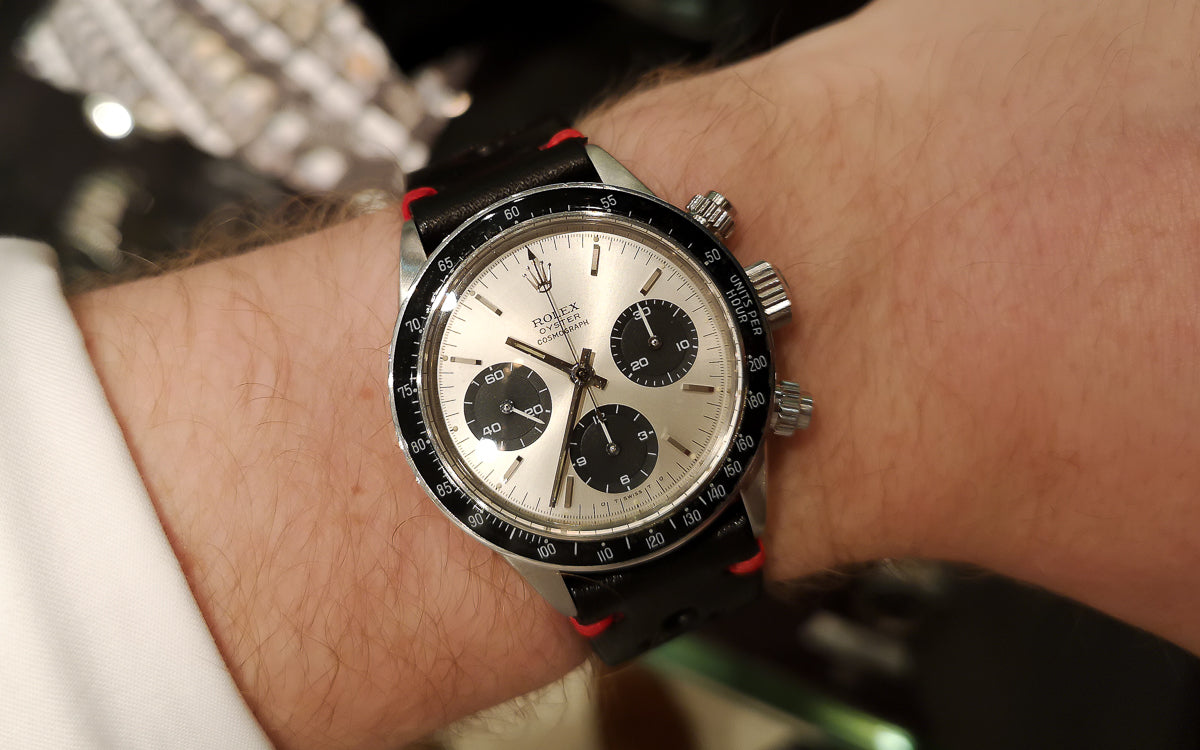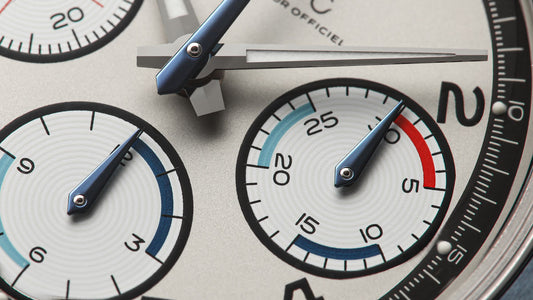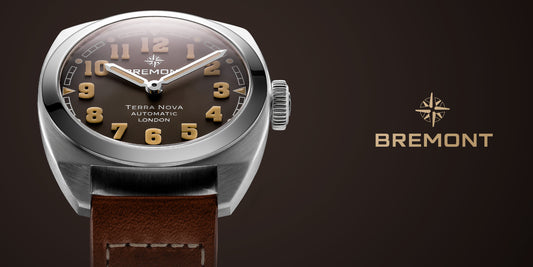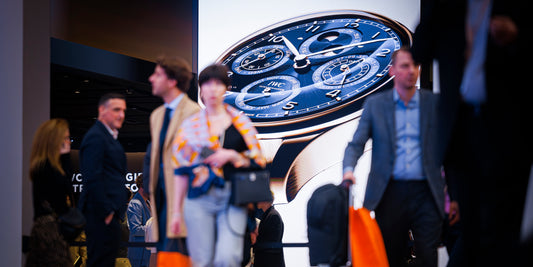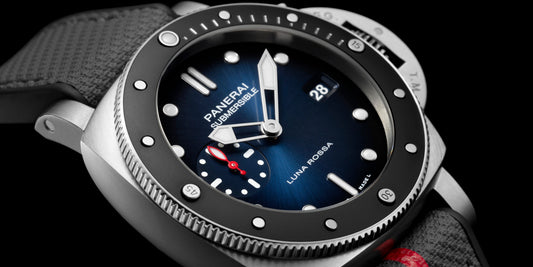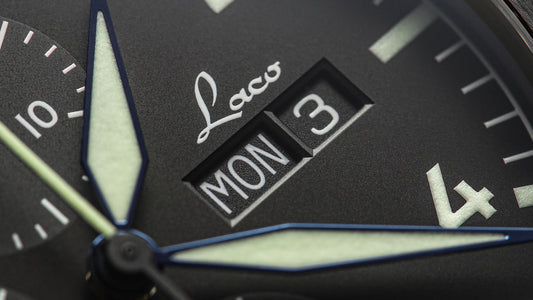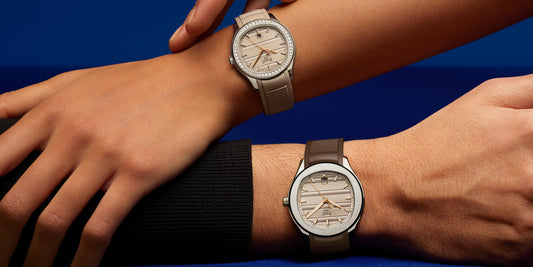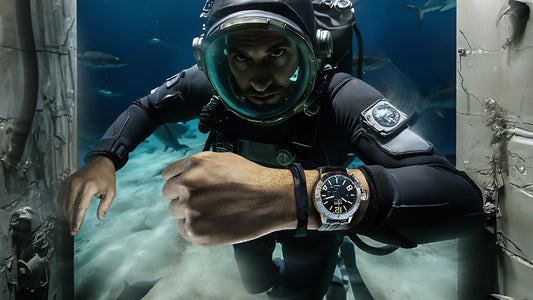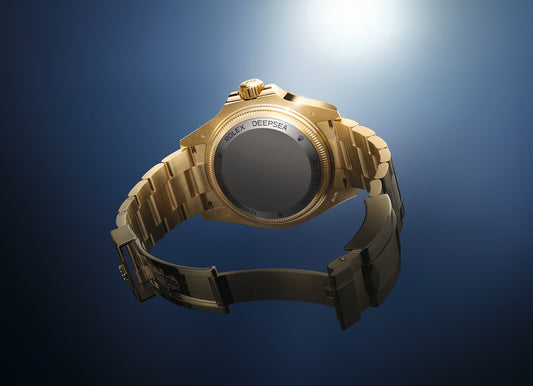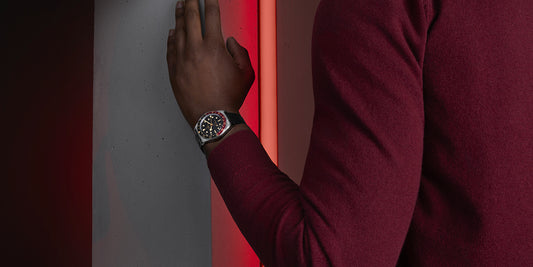The word icon is thrown around a lot nowadays...so is the Speedmaster really that iconic?
I was just over one year old on 24th July 1969. I am reliably informed by my father that as soon as Apollo 11 landed on the Sea of Tranquillity and the world united in wonder at what we can achieve, he carried me out into the garden and we looked up together at the Moon.
He knew I did not understand but I think he wanted me to be a part of mankind’s giant leap and something must have rubbed off as I have had an enduring fascination with the Mercury, Gemini and Apollo missions ever since. From the technical genius and almost brutal power of the Saturn V rocket to the delicate spider like Lunar Module all elements of our travels into space are simply awe-inspiring – even 50 years later.
As a watch enthusiast, it is impossible to study the history of manned space flight without being inspired by the one piece of essential equipment that has seen nearly every major event in our reach for the stars - the Omega Speedmaster.
The Speedmaster shoots to stardom
First worn by Mercury pilot Wally Shirra on SIGMA 7 in 1962, the Speedmaster has arguably become the most famous watch in the world and can claim the technical wonder of being the first watch to be worn on an extra-terrestrial body or float in the vast blackness of space. The romanticism and emotion of those scenes are overwhelming but before we get lost in the magic of trans-lunar injection let us take a step back and understand how this iconic chronograph became one of NASA’s most trusted partners in adventure.
When Uri Gagarin became the first man in space in 1961 it is widely agreed he wore a Sturmanskie watch –a low-end military-style Russian model. The concept of having equipment specifically designed for space flight was relatively new and early astronauts made do with untested timekeepers. When the USA entered the space race the early pioneers wore their own watches - the classic CK2998 Speedmaster worn by Wally Shirra was personal property. This model has now become iconic and has thankfully been re-released by Omega under the title of The First Omega Worn In Space.
24-hour Breitling Cosmonaute
Image courtesy of Breitling / breitling.com
When Scott Carpenter orbited the earth in the Mercury/Atlas ship AURORA 7 he personally approached Breitling to enquire whether they could manufacture a special model of their Navitimer where the hands would circumnavigate the watch face in 24 hours, rather than the traditional 12. This way he planned to eliminate any margin for error between night and day in communication with Mission Control. Carpenter had selected the watch as it was (is) a superb pilot chronograph that could perform several functions replicating cockpit dials thanks to a unique circular slide rule.
Breitling obliged and the stunning 24-hour Navitimer Cosmonaute was born and is still commercially available. It is indicative of the relative simplicity of the controls on the Mercury capsule, that Carpenter felt he could pilot the ship with the aid of just a watch. However, the operational Breitling worn by Carpenter proved to lack the necessary robustness for space flight and was badly damaged during re-entry vibration and splashdown impact.
The Breitling Cosmonaute Chrono may not have survived Mercury but NASA had come to realise that a reliable high-end chronometer was essential astronaut equipment as it could theoretically save lives in the event of instrumentation failure. For NASA the challenge was to select a series of high-end watches and test them in ways that were unimaginable. No one had ever walked in space, let alone set foot on the moon, so the greatest aerospace minds took every piece of the data they could find from early satellites and moon probes like Surveyor 3 and used this information to devise the most tortuous testing regime ever to be faced by a watch.
History could have been written completely differently...
NASA approached ten well-known manufacturers out of which four submitted technically compliant watches for test and consideration. The shortlist comprised a Longines 235T, a Rolex Cosmograph, a Hamilton chronometer and the Omega Speedmaster. The Hamilton was a pocket watch design and was immediately discounted prior to testing. The three remaining watches were subjected to the following tests which NASA judged best simulated the extremes of rocket launch, weightlessness, zero gravity, EVA (extravehicular activities) both in space and, one day, on the Moon and re-entry.
- Shock – Six shocks of 40g each, in six different directions.
- Low Temperature – Four hours at a -18° C
- Pressure/Temperature Chamber – pressure of 1.47 x 10exp-5 psi with temperature at 71°C. The temperature would then be lowered to -18°C over a 45 minute period - then raised to 160°F. The watch would be subjected to this particular test 15 times.
- High Temperature – 48 hours at 71°C followed by 30 minutes at 93°C. Atmospheric pressure fixed at 5.5 psi and humidity 15%.
- Humidity – Each watch would spend 240 hours at temperatures between 20°C and 71°C at 95% humidity.
- Pure Oxygen – Each watch would be subjected to an atmosphere of 100% oxygen at a pressure at 5.5 psi for 48 hours.
- Acceleration – Each watch would be accelerated from 1g to 7.25g within 5.55 minutes.
- High Pressure – Watches would be subjected to a pressure of 23.5 psi for one hour.
- Vibration – 5 to 2000 cps for 30 minutes – tested three times
- Acoustic Noise – 130dB for 30 minutes.
The fact that any of these watches survived the tests is a testimony to the craftsmanship with which they were made. In a rare interview, a NASA tester stated that he expected all of the watches to be destroyed and the space administration would pick the one that simply lasted longest.
The Rolex had a couple of stumbles in humidity under pressure but its nemesis proved to be the extreme heat test where the sweep chronometer hand warped so badly it prevented the hour and minute hands from moving. At this stage, the Rolex was eliminated. The Longines lens popped off twice during high heat and decompression tests. It too was rejected. The Omega, however, performed well during all tests, its most severe reactions being time loss and gain during decompression and its luminescence being destroyed. The Speedmaster suffered no mechanical failures and was consequently selected by NASA.
The Speedmaster graduates
1965 saw the advent of Gemini, the first 2-manned spaceship which would serve as a testbed for Apollo. On 23 March of that year Gus Grissom and John Young in Gemini 3 wore the very first NASA issued Omega Speedmasters. Only a few months later the watch would be seen by the world in one of the most famous NASA images of all time when Ed White carried out America’s first spacewalk. On his left arm the Speedmaster can clearly be seen defying extreme cold, zero-G and no atmosphere. It was worn on a unique long Velcro strap designed to fit over a space suit – a design feature carried over to Apollo.
By NASA / James McDivitt (Great Images in NASA Description) [Public domain], via Wikimedia Commons
It was this picture of Ed White which sparked off my true enthusiasm for the early space missions. A passion which ultimately lead to me owning a Speedmaster Professional. I undertook to learn much more about Apollo and only then did I fully appreciate what mankind and the trusted Speedmaster had achieved.
In part 2 of this feature, we will explore the transition from Gemini to 12 amazing Apollo missions including how a Speedmaster saved the lives of the crew of Apollo 13 and the mystery watch worn on Apollo 15.
Stay tuned...





